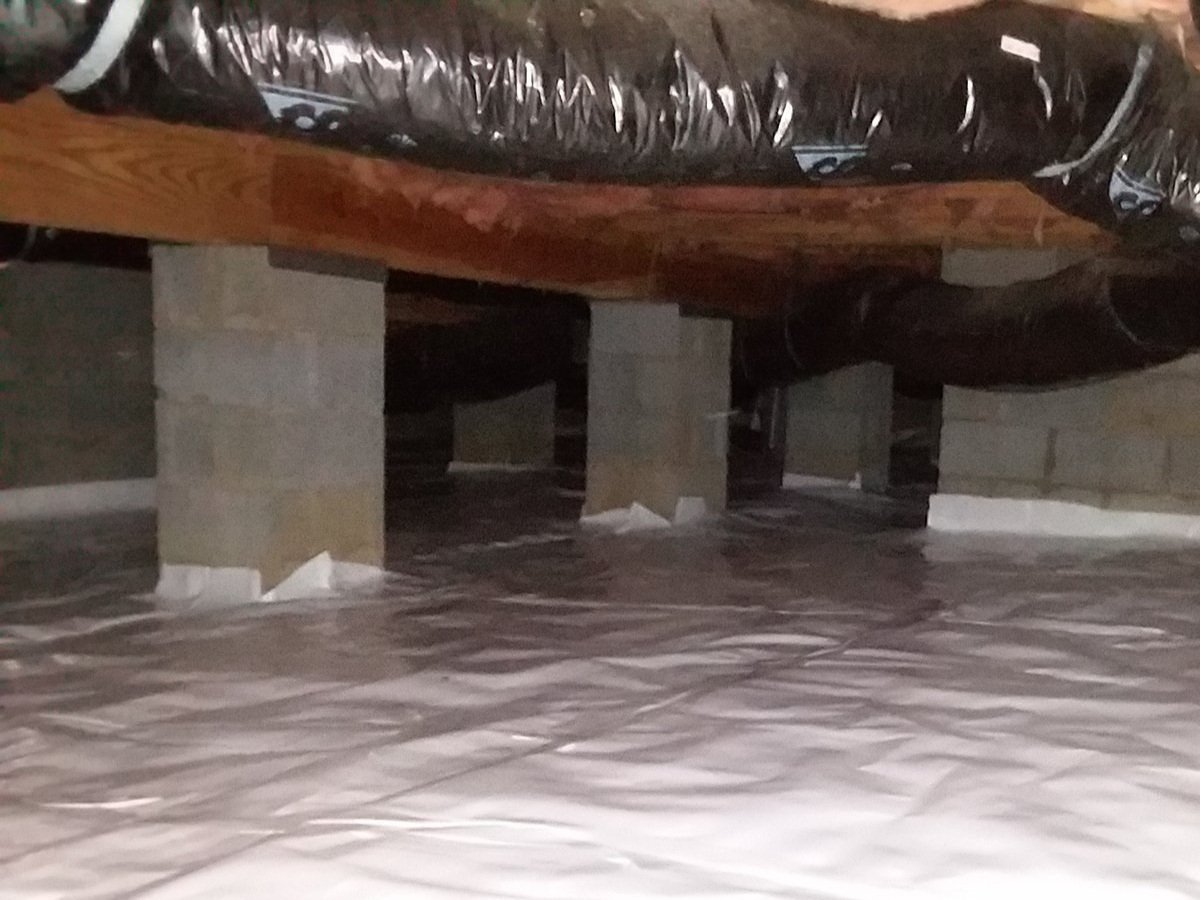Vapor Barrier Installation or Replacement
Vapor barriers protect your home from moisture
The most common thing present in all vented crawl spaces in North Carolina is moisture. This is caused by both hot and humid summers along with ample rains in the Spring and Fall. The majority of homes in the Triangle area were built with a dirt crawl space beneath the home and are vented. Depending on the age of your home your vapor barrier may be as simple as a sheet of plastic laid on the ground or it may not have a vapor barrier at all.
Moisture from the ground and from crawl space vents combine to create all sorts of problems under your home. This moisture can create mold, mildew, dry rot and allows insects and other pests to thrive. A vapor barrier is key step to reducing this moisture. If there is excess moisture under your home you may see signs of efflorescence on the foundation walls or even standing water in your crawl space. Efflorescence is the white or chalky looking marks that are seen when moisture is penetrating the cinder block foundation. It may be caused by an exterior drainage issue, excess standing water or other moisture source. Excessive water may require additional measures like a dehumidifier or sump pump or correction of the drainage problem but the vapor barrier needs to be addressed as the first step in a solution.
Properly installed a vapor barrier prevents moisture from the ground from migrating to the floor joists, insulation, sub-flooring, and other materials located in a crawl space. As the ground becomes saturated during rainfall, moisture moves through the ground like a sponge, coming into contact with the soil underneath your home. Even with a properly sealed foundation wall and good drainage, moisture will migrate through the soil under the foundation creating conditions perfect for mold growth, musty odors, insects and other problems.
Standard 12 mil Vapor Barrier
Install a new vapor barrier or replace an old vapor barrier
If your vapor barrier is old, torn, missing in areas or degraded it may be time to install a new one. Additionally if your home was built without a vapor barrier then installing one is a great first step toward controlling moisture.
A correctly installed crawl space vapor barrier should be overlapped and taped to eliminate any gaps in the coverage. The plastic is cut to extend to the edge of the walls and around the edges of footings and piers under your home. Triangle Crawl Space Solutions overlaps our 12 mil vapor barriers by 12 inches and tapes each seam. The edges along walls and around piers are not attached on a standard vapor barrier.
Current building code specifies a minimum thickness of 6 mil but a thicker 12 mil plastic liner performs better and is less likely to be damaged by any maintenance or access to the crawl space. Triangle Crawl Space Solutions recommends the 12 mil plastic liner for most homes unless you are planning on selling your home in the near future and wish to meet only the minimum code requirements.
Sealed vapor barrier extending up walls and piers
Sealed Vapor Barriers
A sealed vapor barrier uses the same heavy duty 12 mil plastic liner as the standard vapor barrier but the plastic liner is fixed to the foundation walls and the individual footings of the home are wrapped. It extends up the piers and foundation wall to block moisture from entering the crawl space. A gap is left between the top of the vapor barrier and the sill board of the home to allow for any future inspections (commonly for pest inspections, as required by NC Building Code).
A sealed vapor barrier provides additional protection against moisture infiltrating your crawl space. If you are having excessive moisture problems indicated by standing water, efflorescence, mold growth or puddles underneath your home, Triangle Crawl Space Solutions will often recommend a sealed vapor barrier to help address these problems.
Vapor Barrier Materials
For our standard 12 mil vapor barriers and sealed vapor barrier we use Silverback HS 12 mil material. This is a thick, high quality, cross woven polyethylene material specifically designed and reinforced for crawl space usage. It is odorless and does not off gas once installed. The white top finish brightens up the crawl space. Full product specs can be found here. Seams are taped.
For the minimum code required 6 mil vapor barriers we use a standard black plastic sheeting. We strongly recommend using the 12 mil material for a longer lifespan and better protection of your crawl space.
Additional moisture control methods
Once your new vapor barrier is properly installed TCSS can discuss any further needs to remove moisture like a sump pump or dehumidifier based on your specific moisture levels and the condition of your crawl space. It all starts with a free assessment of your crawl space…just give us a call.




